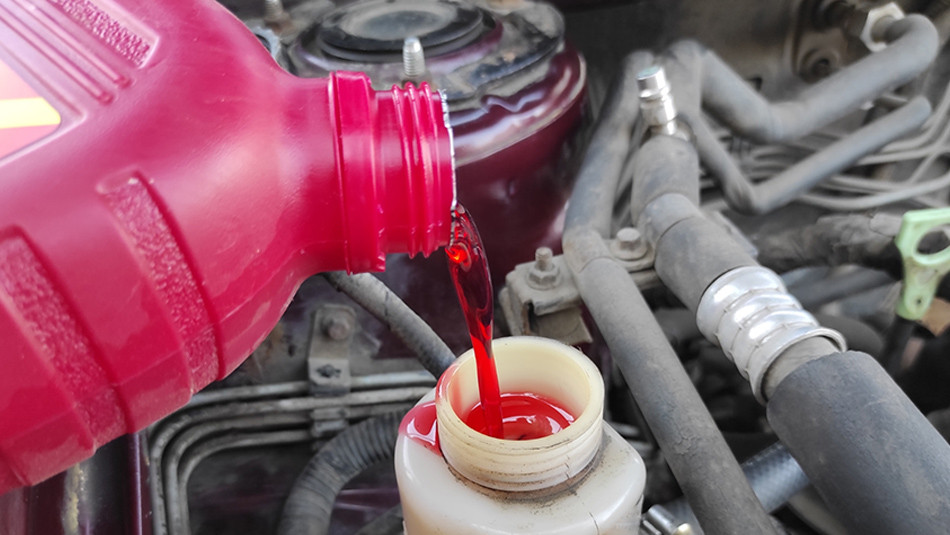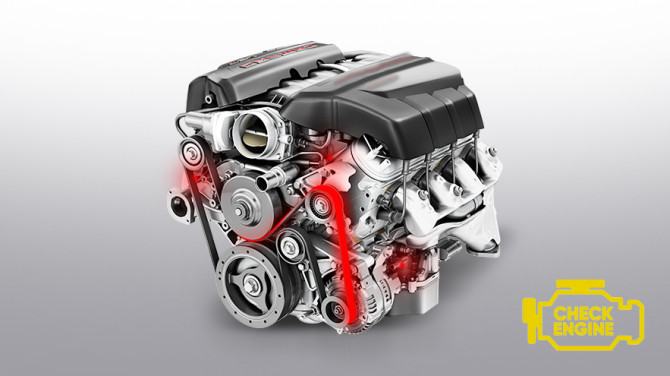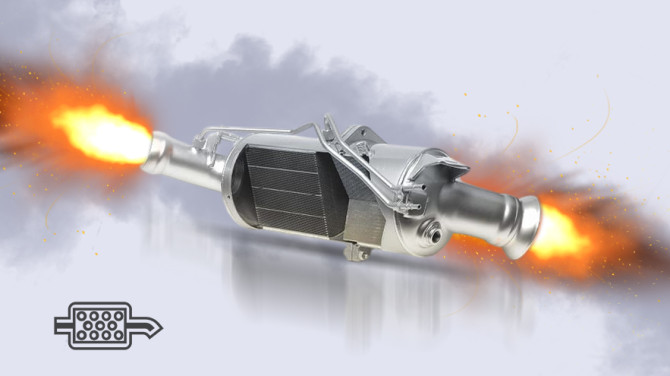6 myths about power steering oil

What do you know about power steering fluid? Most of the information probably comes from car manufacturers or the Internet. In reality, half of the information from expert websites and car manufacturers is not true.
Stop living in ignorance; now is the best time to learn the whole truth about power steering fluids.
Helpful Tips Regarding Power Steering Fluids
Power steering fluid is a working fluid that transfers pressure from the power steering pump to the rack and pinion steering gear. Other functions of the fluid include:
- Cooling and lubricating components of the power steering system.
- Protecting metal parts of the power steering system from rust.
There are many hydraulic oils on the market, and it's easy to get lost in their diversity. To distinguish fluids, pay attention to color and chemical composition. Oil colors are as follows: red, yellow, and green. Oils are divided into mineral and synthetic based on their chemical composition. Let's take a closer look, starting with colors
Red Oils
Red hydraulic fluid is a creation of General Motors, which produces both mineral and synthetic fluids. The most common mineral oils with a red tint are Dexron II and Dexron III, while synthetic oils include ATF and its derivatives.
Red fluids are used in power steering systems and automatic transmissions, so these oils are often referred to as transmission fluids.
Oils contain additives for friction clutches in automatic transmissions. These additives do not affect the operation of the power steering system. Therefore, red oil can be used without problems in both an automatic transmission and a hydraulic power steering system. For example, in Japan, there is no division between transmission and hydraulic oils, and the same fluid is used for both systems.
Red oil is commonly used in American, Asian, and European vehicle brands.
Yellow Oils
Yellow mineral oils are used only in power steering systems. Synthetic oil fills the power steering system and is used in hydraulic suspension.
Daimler AG is the main producer of yellow mineral fluid for power steering systems. This oil is most commonly found in vehicles of brands owned by the Daimler Group, such as Mercedes-Benz, Smart, AMG, and Maybach.
The most popular brands of synthetic yellow oil are Total and Mobil. Yellow synthetic oil is often found in Citroën vehicles, and the oil is used in both hydraulic power steering and hydraulic suspension.
Green Oils
Green oils can be mineral or synthetic and are used only in power steering systems.
Most mineral and synthetic green oils on the Polish market are produced by the VAG Group. These oils are most commonly found in vehicles of the VAG Group - Volkswagen, Audi, Bentley, Porsche, Lamborghini, Bugatti, Seat, Skoda, Scania, and MAN. Mercedes-Benz also produces its range of green mineral oils for hydraulic power steering.
BMW is another popular manufacturer of synthetic green oils for hydraulic power steering. The manufacturer offers Pentosin oil, which is used in most BMW vehicles.
Of course, there are other oil manufacturers, but they produce fluids for hydraulic power steering according to the technologies and standards of the companies described above. Other companies simply buy the rights to produce specific oils.
IMPORTANT: All brands and manufacturers mentioned above are for illustrative purposes only to help you understand the context. We are not trying to promote these brands or claim that they are better than others.
Understanding oil colors, let's move on to the chemical compositions that determine the properties of fluids and additives, as well as the viscosity of the oil.
How Mineral Oil Differs from Synthetic Oil?
- Mineral oils are based on refined fractions of crude oil, such as paraffins and naphthenes. The oil base constitutes up to 97% of the total oil volume, with the remaining 3% being additives that improve its properties.
- Synthetic oils are based on polyalcohols (ethylene glycol or propylene glycol) and crude oil fractions refined by hydrocracking. The share of alcohols and oil fractions is 92-97% of the total oil volume. The rest consists of various polyethers and additives.
- Mineral oils are usually 2-3 times cheaper than synthetic ones.
- Mineral oils withstand temperatures from -40 to +90 degrees Celsius.
- Synthetic oils retain their physical and chemical properties at temperatures from -40 to +130-150 degrees Celsius.
Similarities between mineral and synthetic oils:
- At temperatures below -40 degrees Celsius, both types of oil thicken, indicating very heavy steering and poor vehicle maneuverability.
- If the temperature rises above the critical level, the oil becomes watery, loses viscosity, starts foaming, and boiling. Steering becomes unpredictable - it may be intermittent, and the wheels may respond slowly to steering.
- Red Nissan oil
- Additives in oils serve specific functions:
- Lubricating metal, rubber, and PTFE parts.
- Reducing friction between parts.
- Stabilizing the viscosity of the oil.
- Protecting parts from corrosion.
- Preventing oil foaming.
- Protect the rubber components of power steering repair kits and power steering/electric power steering pumps;
- Coloring oils for easy identification.
Having dealt with oil colors and chemical compositions, it's time to debunk myths about power steering oils and determine which ones are true and which ones are not.
Debunking Myths About Power Steering Oils
Myth #1: Synthetic oils wear out rubber components of the power steering system faster than mineral oils
Answer: False.
Over 15 years of working with power steering systems, we have heard from various drivers many times that they choose mineral oils for power steering because synthetic ones degrade rubber elements faster. Studying this topic for 15 years, we have found no correlation between the type of oil and the speed of rubber seal wear.
Both synthetic and mineral oils always contain different additives that protect rubber elements and extend their lifespan.
The truth is that any oil - both synthetic and mineral - can damage parts if it is old or contaminated:
- You saved money and bought low-quality oil with incorrect chemical and physical properties. Such a fluid quickly becomes contaminated and does not adequately protect metal parts from rust and friction, affecting rubber elements as well.
- You have not changed the oil for a long time. During operation, various microscopic debris and impurities accumulate in the oil, accelerating the wear of rubber seals and oil seals.
- You mixed two types of oil and drove with this "cocktail" in the power steering system for a long time. We will discuss what and how to mix a little later.
Myth #2: Hydraulic assistance can only be filled with oil recommended by the manufacturer
Answer: Almost true.
In the technical documents of vehicles, car manufacturers recommend using specific oils - usually, these are fluids sold by the car manufacturer. This is essentially advertising their product at the expense of another. You bought our car - now buy our oil.
Of course, you can use the appropriate oil from any manufacturer. A perfect example is ZF pumps, which work equally well with yellow mineral oils from Daimler AG and green mineral and synthetic oils from VAG.
ZF steering pumps are very undemanding regarding oil.
It is very rare for manufacturers to install steering system seals that only last a long time with specific oil brands.
IMPORTANT: If you want to fill the power steering system with oil that is not on the recommended oil list, you must:
- Consult with specialists, such as a workshop specializing in power steering repairs.
- Completely drain the old oil and thoroughly flush the power steering system to avoid mixing the new oil with remnants of the old fluid.
- Buy high-quality oil from reputable and well-known brands.
Myth #3: Some types of fluids can be mixed without affecting power steering system components
Answer: Also almost true.
There are many articles on power steering oils on the Internet that provide the following information:
- Mix red with red and yellow with yellow.
- You can also mix red mineral oils.
- Never mix green oil with other colors.
- Green fluid can be topped up with another green oil, but only if both are listed in the recommended oils for the vehicle.
- Never mix mineral oil with synthetic oil, even if they have the same color.
In reality, there are only two 100% true statements. Do not mix:
- Mineral and synthetic oils because they have a different base.
- Green fluids with red or yellow.
Mixing oil according to other rules described above is possible ONLY in extreme cases, for example, when there is a failure in the power steering system, and you urgently need to drive to a service station, but there is no appropriate hydraulic oil in stock, and there is no time to look for it. Or if you are stuck in the middle of the road with a damaged steering gear, you do not have the right oil on hand, and the only way to reach your destination is to borrow oil from the first driver who stops.
Long-term use of a mixture of two oils can lead to power steering pump failure. If you were forced to mix two types of oil, remember to thoroughly flush the power steering system from the remnants of this mixture after the repair. Otherwise, the new fluid will mix with contaminants from the old oils, negatively affecting the properties of the new fluid.
DO NOT mix two different types of fluids of the same color, let alone different colors! Do not risk your vehicle and carefully watch what you are pouring.
Myth #4: Hydraulic oil must be changed every 30,000-45,000 kilometers
Answer: False.
Mileage is not the only factor affecting the lifespan and condition of the oil. The properties of the oil also depend on:
- The driver and their responsibility. If you regularly check the oil condition, perform inspections on time, and address any signs of malfunctions promptly, the oil will last much longer, from 60,000 to 100,000 kilometers.
- The condition of the pump and other components of the power steering system, steering gear, and other parts and assemblies of other parts and assemblies. If any part of the power steering system is corroded or malfunctions, the oil quickly becomes contaminated with fine particles and metal dust. The latter occurs in the case of mechanical damage to the stator walls of the pump or wear of the peripheral part in the gearbox housing.
- The integrity of the system. The oil must be changed if air, water, dust, or dirt has entered the system. In such cases, the oil loses some of its physical and chemical properties, starts foaming, boiling, or thickening faster than usual, wearing out power steering components and clogging with metal dust.
Myth #5: You should check the oil level in the power steering system every 15,000 kilometers
Answer: True.
It's quite simple: by covering 15,000 km, the clogged oil will not have time to seriously damage the power steering system, and the technician will easily eliminate all faults.
Checking the condition of power steering fluid using a syringe
Inspections are undoubtedly important, but you can independently check the oil in the power steering system. How to do it:
- Open the tank cap.
- Dip a clean rag or white sheet of paper into the oil. If the stain on the improvised "probe" is very dark, it's time to change the oil. Instead of a rag or paper to take a sample of the oil, you can use a regular syringe.
- Carefully examine the oil stain on the sample. If you notice any impurities, no matter how small, the oil is no longer suitable for use and must be changed.
- Carefully smell the oil (we hope everyone remembers how we were taught to smell reagents in chemistry class). If the fluid has an unpleasant odor, the power steering pump is likely damaged, which means the oil must also be changed.
Myth #6: Cheap power steering oil is not always bad oil
Answer: True, but only partly.
Certainly, there are proven oil brands that offer fairly inexpensive fluids. But saving must be reasonable. Do not buy oil from unknown brands just because it is two or three times cheaper than its well-known counterpart. Most often, such a price is due to low quality that does not meet any standards.
Remember that low-quality oil quickly destroys the power steering system, and the cost of repairing the steering system will be much higher than the amount saved on oil.
Repairing a power steering pump costs several times more than the price of good oil. Save wisely.
Do you want to buy inexpensive but high-quality power steering fluid? Consult with a professional, such as an employee of a specialized power steering workshop. Experienced mechanics and specialists will surely be able to recommend something worth considering and suitable for your vehicle.
Remember that all decisions regarding car maintenance and repair are up to you. It is up to you to decide how to use the information received and which type of power steering oil to apply.







